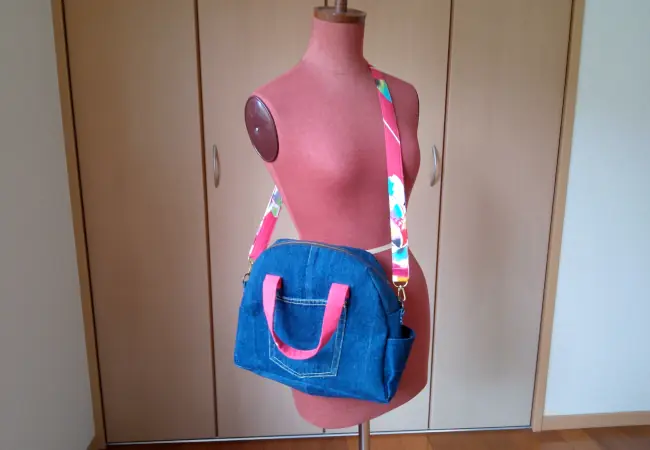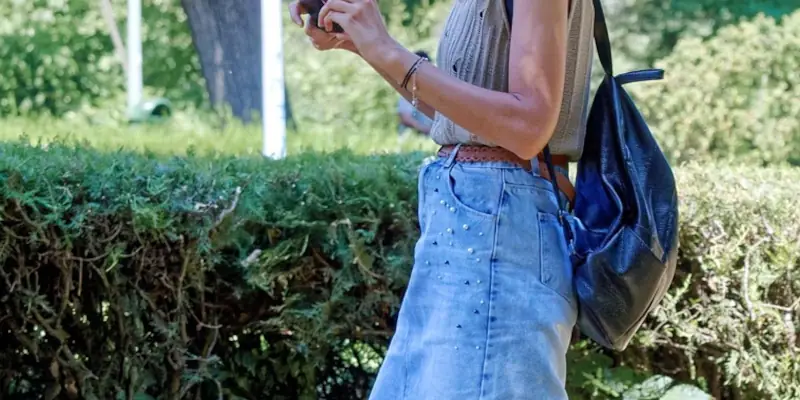I finally finished the 8th bag, despite having several troubles, such as getting injured in my left hand and solving my confusion about bag structures. It took a week.
Although it was unsatisfactory work, I got a lot of lessons from this experience. We often get more beneficial feedback from failures than from successes. Let’s talk about it with my new product.
The 8th bag
My 8th bag is a Boston-bag-like handbag. Its width is 32 cm, which is larger for a handbag. It is remodeled from a pair of used jeans, as shown in the following photo:
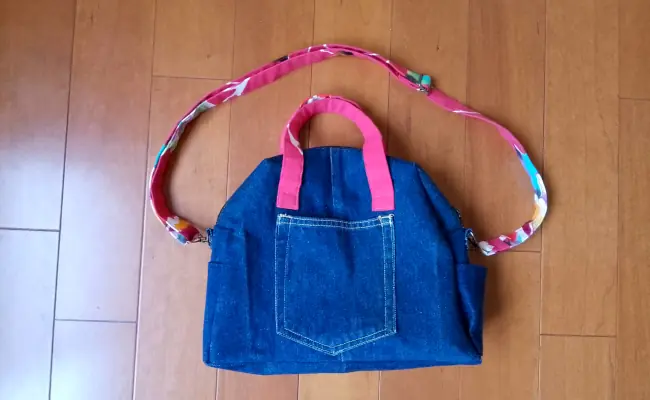
I tried several new sewing methods this time as well. New challenges bring us experiences and lessons, whether we succeed or fail.
Interfacing
First, I used interfacing, which is a textile that adds stiffness to the fabric. It is shown in the following image. (The white fabric in the lower right.)
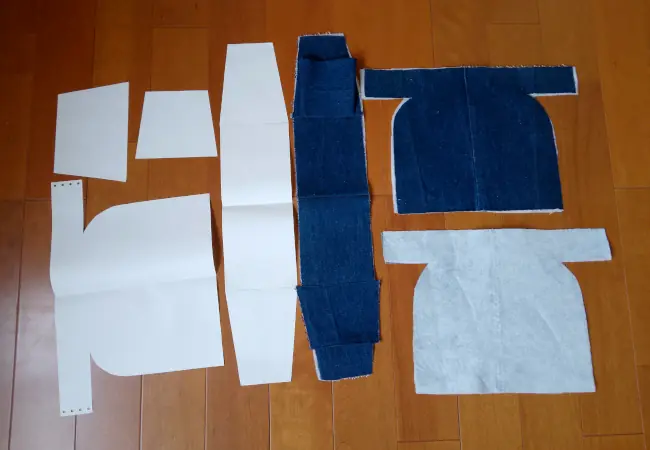
It is a fantastic material because it makes soft cloth hard-textured like leather. In other words, we can make a bag that feels like leather, even from fabric.
Leather has a steady form and strength but less variation in color and pattern. On the other hand, cloth is soft but has various colors and patterns. Interfacing realizes the best of both characteristics.
It brought new possibilities to me. I can create handbags. Although it is a bit expensive, it is worth using.
Applying a sewing pattern
The second challenge was using a sewing pattern, which is a paper template of fabric parts. It is like a blueprint.
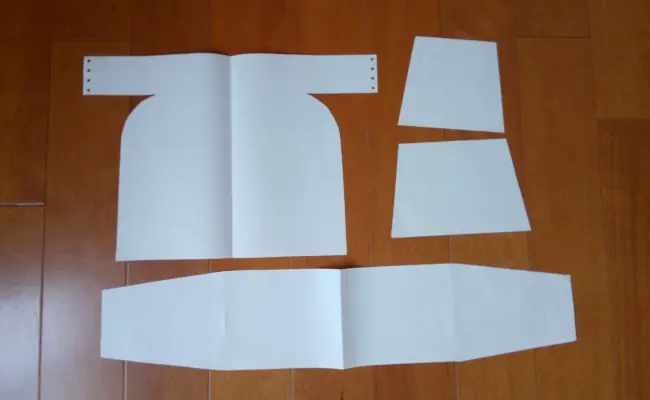
Although it gave me a new experience, I should have chosen another pattern with a simpler structure. Although it might look simple for some people, this pattern was too complicated for me.
There are two kinds of simplicity: the small number of parts and the simplicity of the parts. This pattern is the former—a kind of simplicity that demands advanced skills. It has almost no square parts except for pocket parts. It meant they were not easy to sew while maintaining symmetrical balance.
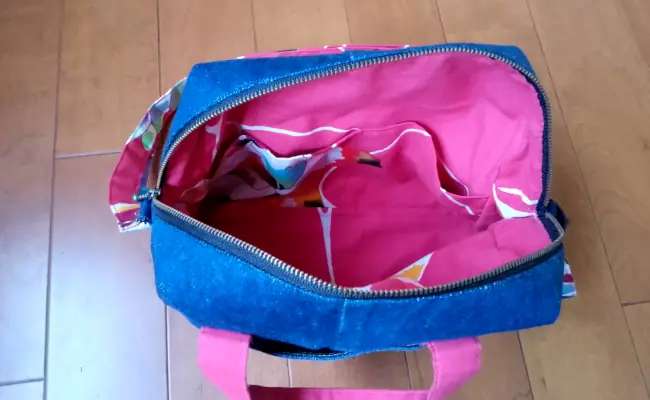
I should have chosen the latter, a pattern with simple-shaped parts. Only square parts are easy to sew.
Despite its distinctive appearance, it was not a design I wanted to repeat in terms of the difficulty of sewing. There are things we can only understand by trying.
An accent color
The third new try is adding an accent color. In this work, I used the red-patterned handles and the shoulder strap.
An accent color makes it lively while preventing monotony. The more we use the accent color in a larger area, the more it appears energetic. However, it can also create a childish impression.
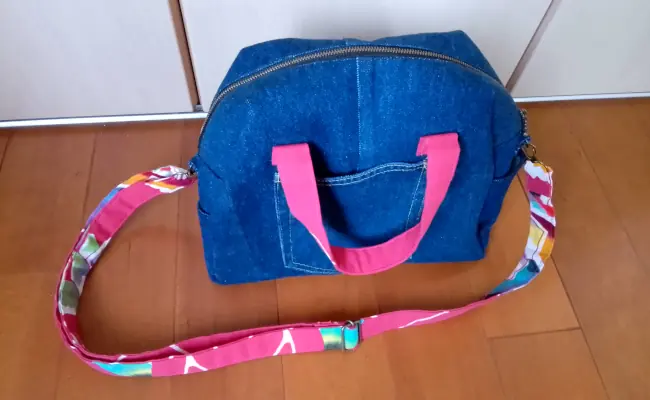
In this bag, the area of the accent color was too large and vivid. I wanted to make a calm, adult bag. However, this bag feels more suited for children around 15 years old. I should have reduced the area of the accent color and used a more natural color.
A broken symmetry design
The final point is pockets. It has 5 pockets: one on the front, two on both sides, and two on the inside. Since the pattern has no pockets originally, I added them.
I wanted one side pocket for putting a water bottle. That is why the bag has an odd pocket on one side.
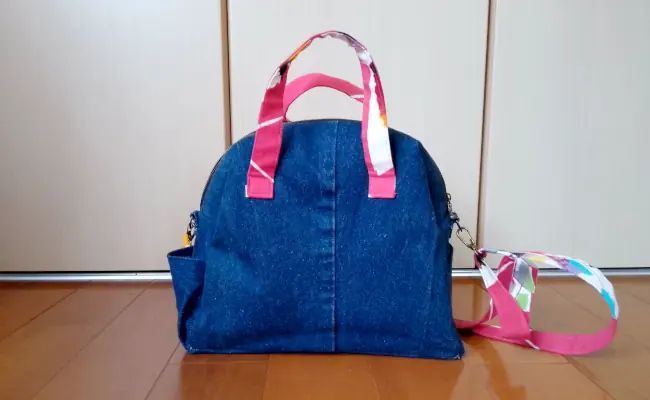
However, that ruined the appearance. It looked more beautiful if it were entirely symmetrical. In addition, that pocket didn’t work because it was too small to put in a water bottle. There was no meaning in making such a shape of a pocket.
I learned that it is sometimes better to prioritize appearance over functionality in cases where the purpose is trivial.
Conclusion
Anyway, I finished my 8th bag. Although it was unsatisfactory work, I learned a lot from the result.
I will sell this work at the local festival held next month. I intend to price this one affordably.
Let’s move on to the next work and search for better designs.
Thank you for reading this article. I hope to see you in the next one.
